2U, Inc., a global leader in education technology, and edX, a leading online learning platform and education marketplace, announced they have entered into a definitive agreement to join together in an industry-redefining combination that will help power the digital transformation of higher education, expand access and affordability, and usher in a new era of online learning. 2U will acquire substantially all of edX’s assets for $800M in cash. Together, 2U and edX will reach over 50 million learners globally, serve more than 230 partners, and offer over 3,500 digital programs on the world’s most comprehensive free-to-degree online education marketplace.
Proceeds of the transaction will flow to the nonprofit that will continue under the leadership of edX founders Harvard and MIT and will be dedicated to reimagining the future of learning for people at all stages of life, addressing educational inequalities, and continuing to advance next generation learning experiences and platforms. Drawing on insights gained at Harvard, MIT, and other institutions, this organization will develop strategies and partnerships to help close the learning gap.
The transaction will bring together the unique strengths and complementary capabilities of two major forces in online education. 2U is the digital transformation partner of choice for more than 80 of the world’s leading universities and expects to approach $1 billion in yearly revenue by the end of 2021, and edX has built one of the world’s strongest online education brands and largest global communities of learners. Over the past decade, 2U and edX have each built mission-driven organizations grounded in the belief that online education and greater access to the world’s best nonprofit universities can change lives and impact generations to come. The combined scale, reach, capabilities, marketing efficiency, and relationships of 2U and edX will unlock unprecedented opportunities to reach and serve more learners, universities, and employers worldwide.
“2U and edX were founded on a shared vision that online education has the power to expand access, create opportunity, and transform lives,” said 2U Co-Founder & CEO Christopher “Chip” Paucek. “Alongside university partners and contributing faculty, Anant Agarwal and the edX team have built an innovative, respected, and globally recognized destination for online higher education. By combining 2U and edX’s global reach and offerings from free to degree, together we believe we can fully realize our shared vision, meet the growing worldwide demand for online education, and deliver growth and long-term value to shareholders and other stakeholders.”
Fulfilling a commitment to preserve and advance the edX mission, 2U plans to operate edX as a public benefit entity, a class of purpose-driven organizations that balances the interests of shareholders with other stakeholders. 2U has also committed to continuing to fulfill the edX mission by, among other things, guaranteeing affordability through the continuation of a free track to audit courses; protecting the intellectual property rights of faculty and universities that contribute massive open online courses; ensuring that participating colleges and universities may continue under their standing agreements with edX; protecting the privacy of individual data for all learners who use the edX platform; and contributing to the ongoing development of the fully open source and independent platform Open edX, owned by the nonprofit led by MIT and Harvard.
“As edX looks to its next phase of growth and impact, joining forces with 2U marks a major milestone in our evolution,” said Anant Agarwal, Founder and CEO of edX and MIT Professor. “2U’s people, technology, and scale will expand edX’s ability to deliver on its mission of providing access to high-quality education to enable all learners to unlock their potential. Together with our university and institutional partners, we will continue to reimagine education in ways that transform the lives of global citizens and positively impact generations to come.” “Our universities founded edX nearly ten years ago to raise the aspirations for online education and make university courses accessible to learners around the world, and it has been enormously gratifying to watch that vision blossom. Today’s announcement will carry forward this mission on a whole new scale, connecting many more learners with a wider range of high-quality options for content, credentials, and degrees.
With online education rapidly changing, it’s the right moment for this leap of evolution for edX,” said Harvard president Larry Bacow and MIT president Rafael Reif in a joint statement. “At the same time, the nonprofit that emerges from this transaction will enable us and our partners to support innovation that enhances learning for all and, we hope, play a catalytic role in closing the learning gap that exists for far too many.” Unlocking opportunity for learners, universities, and employers worldwide edX and 2U’s combined and complementary portfolios of more than 3,500 offerings from the world’s top universities and corporations will unlock new opportunities for edX’s community of global learners—79% of whom reside outside the U.S.—to accelerate their learning journeys, achieve their career goals, and enrich their lives.
- edX offers over 3,000 online programs, including a substantial majority of courses with a free/audit track, Masters and doctorate degrees, Professional Certificates, and MicroBachelors® programs and MicroMasters® programs.
- 2U powers over 500 online offerings, including short courses, boot camps, professional certificates, and undergraduate and graduate degrees, including over 95 degree offerings in licensure-based disciplines. 2U expects to offer many of these programs directly to learners through the edX.org marketplace.
With the acquisition, 2U’s network will expand to include more than 230 partners—including over 185 nonprofit colleges and universities and 19 of the top 20 ranked universities globally. The combined capabilities of 2U and edX are expected to provide university partners with new opportunities to accelerate online growth and innovation, deliver exceptional student outcomes across the career curriculum continuum, and continue bending back the cost curve of higher education.
- edX partners will continue to benefit from edX’s global reach, commitment to research, as well as the open source Open edX platform, while gaining access to 2UOS, 2U’s industry leading, comprehensive tech-enabled services and support in areas like marketing, field placement, career services, and digital learning design.
- At the same time, edX’s thriving marketplace will enable current 2U partners to efficiently reach a larger audience of global learners, offer a wider array of offerings to meet changing learner needs, and expand the impact of their institutions.
The transaction will also expand 2U’s enterprise opportunity with edX for Business and edX Online Campus, creating a more robust set of solutions available to 2U and edX’s combined network of enterprise customers. edX for Business complements 2U’s existing array of enterprise offerings designed to close talent gaps, create diverse talent pipelines, and upskill and reskill the global workforce.
- edX for Business is an on-demand enterprise training solution with thousands of courses and programs on cutting-edge, workplace-relevant topics utilized by over 1,000 leading companies globally.
- edX Online Campus—edX’s enterprise offering designed for universities— supports more than 850 university customers from 72 countries around the world, complementing on-campus education with a rich array of high-quality online courses coupled with data-driven learner insights.
Nonprofit aims to reimagine education, support innovation, and drive inclusion
The nonprofit led by Harvard and MIT will focus on inclusive learning and education. Guided by the efforts and insights from Harvard and MIT research on the dynamics of learning, the nonprofit will collaborate with educational institutions, governments, and other organizations to develop and evaluate new approaches to learning and pedagogy; invest in new learning models that combine the best of online and in-person; promote the adoption of best practices across the education continuum; support innovation in lifelong learning; and advance next generation learning experience platforms, including Open edX. This work will seek to improve educational outcomes and reduce inequities in education by expanding reach to historically underserved communities and preparing all learners for success.
“The transformative power of education is the single best hope for individuals and for society. Through this nonprofit initiative to reimagine learning, Harvard and MIT are uniting to tackle the kind of persistent inequities in education which the pandemic brought so starkly to light,” MIT’s Reif and Harvard’s Bacow said. “Our hope is to tap into what we have learned about digital learning and to push the frontiers of learning toward greater equity and greater impact.”
Across learner ages and stages of life, a learning-and-opportunity gap has revealed itself in variable outcomes for learners and differences in how students engage with digital spaces and tools. The nonprofit will seek out meaningful collaborations and fund initiatives that more effectively serve students from all backgrounds, identifying how to most effectively blend digital tools with in-person support for maximum impact. With these efforts, it aims to advance the field of online education with use-cases for how to meet learner goals in acquiring new skills, increasing their readiness for college, supplementing their in-person training or coursework, and improving employability.
The nonprofit will also support investment in next-generation platforms to continue to advance learning experiences as well as ensure that the Open edX platform is continually improved, remains open source, and powers a vibrant open source community. Following the closing, 2U expects to be a significant contributor of code to the Open edX platform, and the transaction is expected to increase the impact that Open edX can have in supporting learning outcomes around the world. Open edX currently powers approximately 2,400 learning sites worldwide.

 Bitcoin had fallen below $30,000 for the first time in more than five months, hit by China’s crackdown on the world’s most popular cryptocurrency on June 21st. The digital currency slipped to about $28,890, and has lost about 50% of its value since reaching an all-time high of $64,870 in April. China has told banks and payments platforms to stop supporting digital currency transactions. It follows an order on Friday to stop Bitcoin mining in Sichuan province.
Bitcoin had fallen below $30,000 for the first time in more than five months, hit by China’s crackdown on the world’s most popular cryptocurrency on June 21st. The digital currency slipped to about $28,890, and has lost about 50% of its value since reaching an all-time high of $64,870 in April. China has told banks and payments platforms to stop supporting digital currency transactions. It follows an order on Friday to stop Bitcoin mining in Sichuan province. “Over the last 15 years, the Conrad 30 program has brought more than 15,000 physicians to underserved areas, filling a critical need for quality care in our rural communities – a need that was highlighted during the coronavirus pandemic,” Klobuchar said in a statement. “Our bipartisan legislation would allow doctors to remain in the areas they serve, improving health care for families across the nation while retaining talent trained and educated here in the United States,” she added.
“Over the last 15 years, the Conrad 30 program has brought more than 15,000 physicians to underserved areas, filling a critical need for quality care in our rural communities – a need that was highlighted during the coronavirus pandemic,” Klobuchar said in a statement. “Our bipartisan legislation would allow doctors to remain in the areas they serve, improving health care for families across the nation while retaining talent trained and educated here in the United States,” she added. San Francisco Bay Area-based Prashant Prasad, a volunteer for Immigration Voice, a grass roots organization representing the high skilled immigrants in the US, explains why the current bill may be good news. He says, “We started advocating for a simple bill which would remove the per country caps for employment based green cards many years ago. The primary purpose of this was to ensure that employment based green cards are given on a first come first served basis.
San Francisco Bay Area-based Prashant Prasad, a volunteer for Immigration Voice, a grass roots organization representing the high skilled immigrants in the US, explains why the current bill may be good news. He says, “We started advocating for a simple bill which would remove the per country caps for employment based green cards many years ago. The primary purpose of this was to ensure that employment based green cards are given on a first come first served basis. BR will serve as THE ONLY tech platform on which smaller retailers can personally select products from verified suppliers across various categories with minimum MOQs (in most cases, just ONE product per style). Since most sellers and buyers are unable to produce or procure volumes during these uncertain times, BR serves as the perfect matchmaking service for these small-to-mid-size businesses looking for alternative avenues.
BR will serve as THE ONLY tech platform on which smaller retailers can personally select products from verified suppliers across various categories with minimum MOQs (in most cases, just ONE product per style). Since most sellers and buyers are unable to produce or procure volumes during these uncertain times, BR serves as the perfect matchmaking service for these small-to-mid-size businesses looking for alternative avenues. In fact, it has become very expensive and slow to conduct transactions using cryptocurrencies. It takes about
In fact, it has become very expensive and slow to conduct transactions using cryptocurrencies. It takes about  Companies are searching for workers as growing numbers of vaccinated Americans head back to stores. There were 878,000 job openings in the US retail sector in March, a 53% increase from the same month last year, according to the latest
Companies are searching for workers as growing numbers of vaccinated Americans head back to stores. There were 878,000 job openings in the US retail sector in March, a 53% increase from the same month last year, according to the latest Her life has been made into a powerful movie called ‘Sky is Pink’ with Priyanka Chopra Jonas , Farhan Akhtar and ZairaWasim playing lead roles. The movie is now streaming on Netflix. It was inspiring to share Niren’s journey on Chai with Manju. His input in the food and hospitality industry were very insightful including leading Panera profitably in tough Covid times. His advice to those looking to invest in India is worth a watch. His emotional appeal to donate bone marrow to save lives is important as Indian lag behind and his daughter’s life would have been saved with a timely bone marrow donation I loved his three step recipe to make dreams come true and to live life fully describing life as an unfinished painting.
Her life has been made into a powerful movie called ‘Sky is Pink’ with Priyanka Chopra Jonas , Farhan Akhtar and ZairaWasim playing lead roles. The movie is now streaming on Netflix. It was inspiring to share Niren’s journey on Chai with Manju. His input in the food and hospitality industry were very insightful including leading Panera profitably in tough Covid times. His advice to those looking to invest in India is worth a watch. His emotional appeal to donate bone marrow to save lives is important as Indian lag behind and his daughter’s life would have been saved with a timely bone marrow donation I loved his three step recipe to make dreams come true and to live life fully describing life as an unfinished painting. He holds a bachelor’s degree in Economics from St. Stephen’s College in Delhi, an MBA in marketing from the University of Delhi, and also completed the Advanced Management Program at Harvard Business School.One of the best parts of the interview with Dr. Manju Shethwas to watch him sing. Music plays a huge role in his life. Indeed, he is a rockstar CEO.
He holds a bachelor’s degree in Economics from St. Stephen’s College in Delhi, an MBA in marketing from the University of Delhi, and also completed the Advanced Management Program at Harvard Business School.One of the best parts of the interview with Dr. Manju Shethwas to watch him sing. Music plays a huge role in his life. Indeed, he is a rockstar CEO.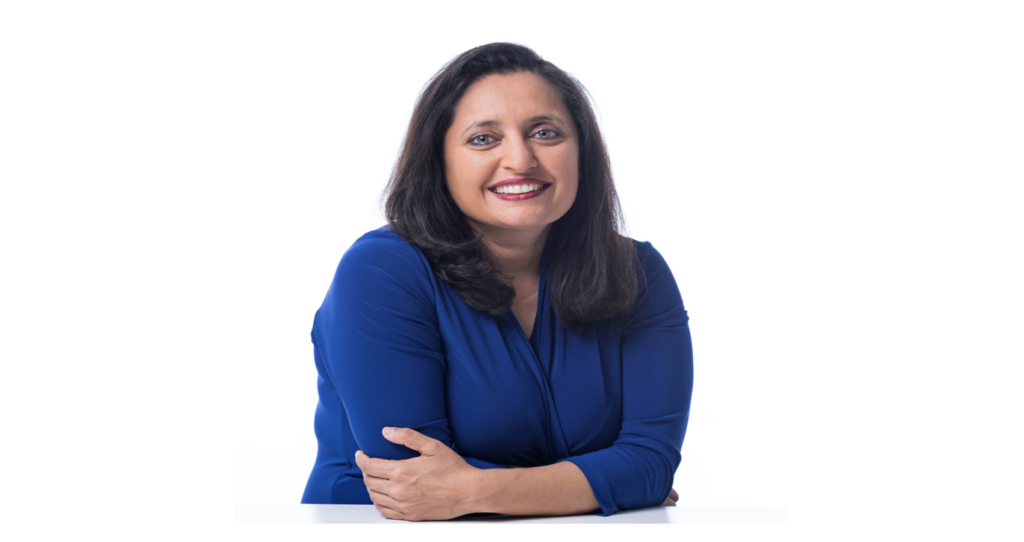 Sonal Shah, the foundation’s president, and TAAF board members were at the White House, where they briefed administration officials, including domestic policy adviser Susan Rice. They discussed how the foundation plans to spend the $1.1 billion in donations to fight back against hate crimes directed at these communities, according to a statement from the foundation. Biden and Vice President Kamala Harris dropped by the meeting to express their support, the foundation said.
Sonal Shah, the foundation’s president, and TAAF board members were at the White House, where they briefed administration officials, including domestic policy adviser Susan Rice. They discussed how the foundation plans to spend the $1.1 billion in donations to fight back against hate crimes directed at these communities, according to a statement from the foundation. Biden and Vice President Kamala Harris dropped by the meeting to express their support, the foundation said. BAPS has been accused of human trafficking and wage law violations. An FBI spokesperson confirmed that agents were at the temple on “court-authorized law enforcement activity,” but wouldn’t elaborate. One of the attorneys who filed the suit said some workers had been removed from the site May 11.The lawsuit has been filed a month after New Jersey labor authorities halted work by a contractor at the Robbinsville temple and at a BAPS temple in Edison. The new lawsuit is a proposed class action complaint, alleging around 200 workers on religious immigration visas endured forced manual labor for the ongoing construction and expansion of the religious property on the 100-acre site.
BAPS has been accused of human trafficking and wage law violations. An FBI spokesperson confirmed that agents were at the temple on “court-authorized law enforcement activity,” but wouldn’t elaborate. One of the attorneys who filed the suit said some workers had been removed from the site May 11.The lawsuit has been filed a month after New Jersey labor authorities halted work by a contractor at the Robbinsville temple and at a BAPS temple in Edison. The new lawsuit is a proposed class action complaint, alleging around 200 workers on religious immigration visas endured forced manual labor for the ongoing construction and expansion of the religious property on the 100-acre site. BAPS is a global sect of Hinduism founded in the early 20th century and aims to “preserve Indian culture and the Hindu ideals of faith, unity, and selfless service,” according to its website. The organization says it has built more than 1,100 mandirs — often large complexes that essentially function as community centers. BAPS is known for community service and philanthropy, taking an active role in the diaspora’s initiative to help India amid the current COVID-19 surge. According to the website for the Robbinsville mandir, its construction “is the epitome of volunteerism.”“Volunteers of all ages have devoted their time and resources from the beginning: assisting in the construction work, cleaning up around the site, preparing food for all the artisans on a daily basis and helping with other tasks,” the website says. “A total of 4.7 million man hours were required by craftsman and volunteers to complete the Mandir.”
BAPS is a global sect of Hinduism founded in the early 20th century and aims to “preserve Indian culture and the Hindu ideals of faith, unity, and selfless service,” according to its website. The organization says it has built more than 1,100 mandirs — often large complexes that essentially function as community centers. BAPS is known for community service and philanthropy, taking an active role in the diaspora’s initiative to help India amid the current COVID-19 surge. According to the website for the Robbinsville mandir, its construction “is the epitome of volunteerism.”“Volunteers of all ages have devoted their time and resources from the beginning: assisting in the construction work, cleaning up around the site, preparing food for all the artisans on a daily basis and helping with other tasks,” the website says. “A total of 4.7 million man hours were required by craftsman and volunteers to complete the Mandir.”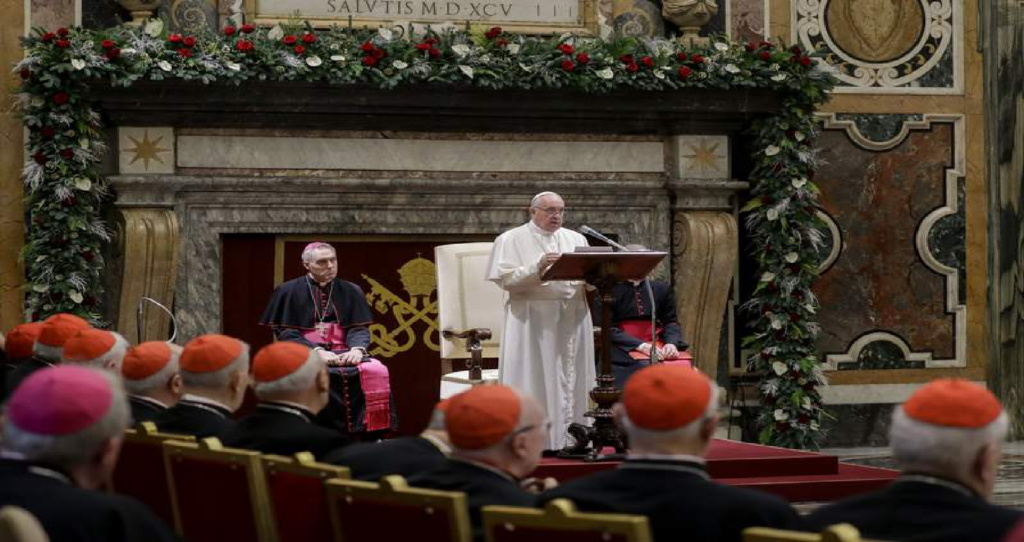 The National Catholic Register writes: “These gifts have been blamed for contributing to corruption in the Church when they were used between high-level Church officials to seek favors, most notably in cases like that of ex-cardinal Theodore McCarrick.”
The National Catholic Register writes: “These gifts have been blamed for contributing to corruption in the Church when they were used between high-level Church officials to seek favors, most notably in cases like that of ex-cardinal Theodore McCarrick.”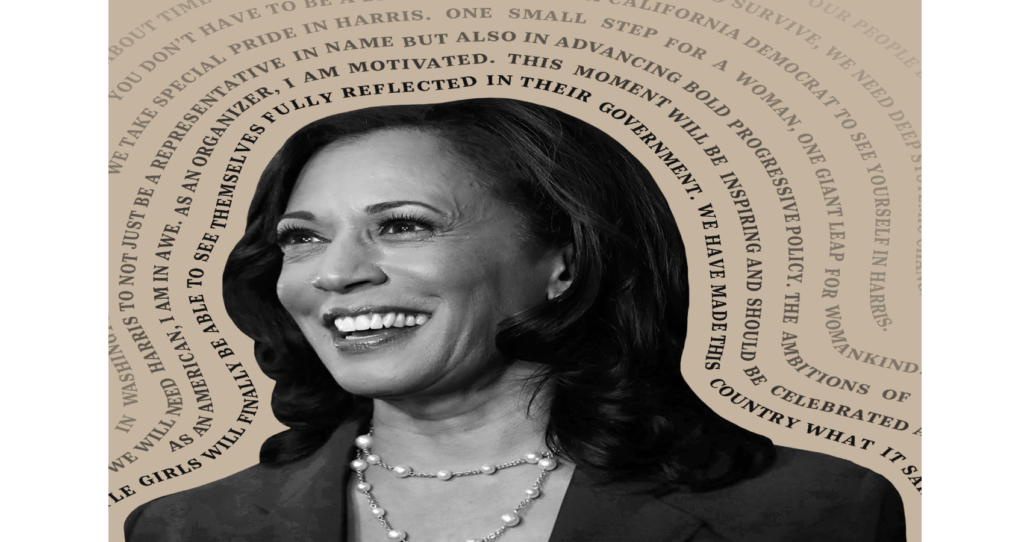 Harris has become increasingly involved in promoting the Biden administration’s infrastructure proposal currently being considered by Congress, known as the American Jobs Plan. She’s taken part in meetings with the Congressional Black Caucus as well as
Harris has become increasingly involved in promoting the Biden administration’s infrastructure proposal currently being considered by Congress, known as the American Jobs Plan. She’s taken part in meetings with the Congressional Black Caucus as well as 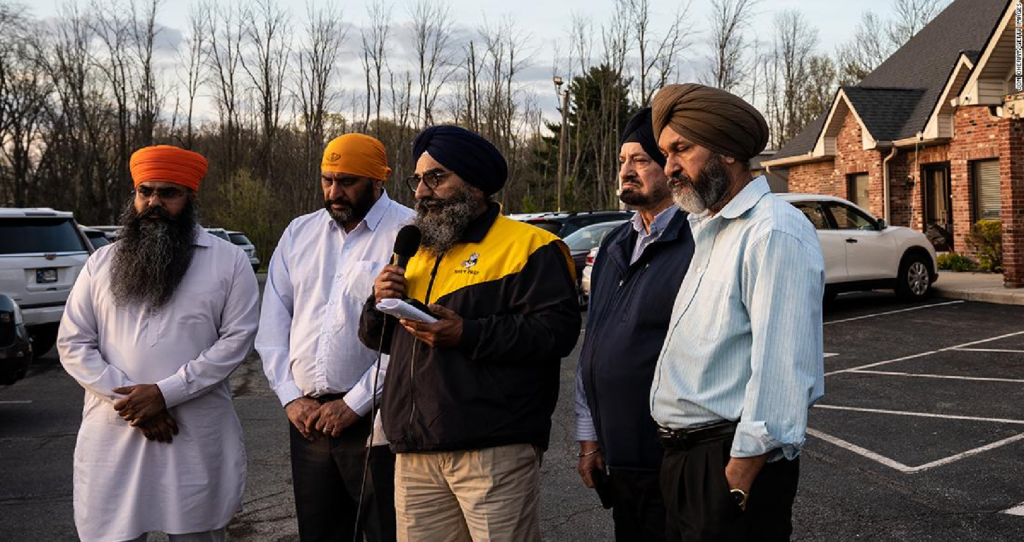 “We will invest significant resources into toppling those who seek to destroy our families, communities, and identity. The senseless gun violence that we’re seeing in this country is reflective of all of the spineless politicians who are beholden to the gun lobby. Period. End of story,” said Nikore. “They will be hearing from us — instead of offering thoughts and prayers, it’s time to mobilize for direct action and vote them out. That is what we’re doing today. We will end the violence, only when we have leaders who have the guts to do so.”
“We will invest significant resources into toppling those who seek to destroy our families, communities, and identity. The senseless gun violence that we’re seeing in this country is reflective of all of the spineless politicians who are beholden to the gun lobby. Period. End of story,” said Nikore. “They will be hearing from us — instead of offering thoughts and prayers, it’s time to mobilize for direct action and vote them out. That is what we’re doing today. We will end the violence, only when we have leaders who have the guts to do so.” Bills using reconciliation in the Senate can advance with just a simple majority, rather than 60 votes. With an evenly divided Senate, liberal lawmakers’ hope of passing gun control and voting rights were dashed last week when a key Democrat, Sen. Joe Manchin of West Virginia, said he would oppose the changes to the filibuster, which creates a 60-vote threshold.
Bills using reconciliation in the Senate can advance with just a simple majority, rather than 60 votes. With an evenly divided Senate, liberal lawmakers’ hope of passing gun control and voting rights were dashed last week when a key Democrat, Sen. Joe Manchin of West Virginia, said he would oppose the changes to the filibuster, which creates a 60-vote threshold.
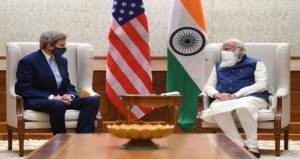 Indian government sources said the South Asian country was unlikely to bind itself to the 2050 goal as its energy demand was projected to grow more than that of any other country over the next two decades.
Indian government sources said the South Asian country was unlikely to bind itself to the 2050 goal as its energy demand was projected to grow more than that of any other country over the next two decades. Governor McMaster presented the proclamation to KV Kumar, President & CEO of IAICC at the inauguration and appreciated the work of IAICC. While speaking at the event, Governor McMaster welcomed IAICC to South Carolina and said his administration will work with IAICC and support its initiatives in the State.
Governor McMaster presented the proclamation to KV Kumar, President & CEO of IAICC at the inauguration and appreciated the work of IAICC. While speaking at the event, Governor McMaster welcomed IAICC to South Carolina and said his administration will work with IAICC and support its initiatives in the State.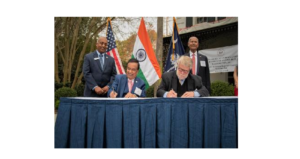 Welcoming the gathering, KV Kumar appreciated Governor McMaster’s efforts in the State and thanked him and the First Lady Peggy McMaster for graciously hosting the IAICC inauguration and the reception at the Governor’s Mansion. He also thanked the Indian Ambassador to the US, Mr. Taranjit Singh Sandhu, and the Consul General of India in Atlanta, Dr. Swati Kulkarni for their continued support to IAICC. Kumar said he missed the Ambassador at the event, and congratulated him for bringing several key initiatives to strengthen India-US relations. During her address,
Welcoming the gathering, KV Kumar appreciated Governor McMaster’s efforts in the State and thanked him and the First Lady Peggy McMaster for graciously hosting the IAICC inauguration and the reception at the Governor’s Mansion. He also thanked the Indian Ambassador to the US, Mr. Taranjit Singh Sandhu, and the Consul General of India in Atlanta, Dr. Swati Kulkarni for their continued support to IAICC. Kumar said he missed the Ambassador at the event, and congratulated him for bringing several key initiatives to strengthen India-US relations. During her address,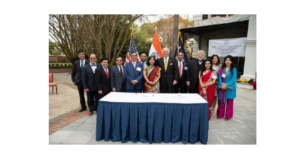 IAICC SE Regional Chairman, Dr. Narasimhulu Neelagaru also thanked Governor McMaster for his support and said he looked forward to working him and the State of South Carolina. At the event, Mr. Kumar introduced Ms. Bhavna Vasudeva, President of IAICC-SC Chapter.
IAICC SE Regional Chairman, Dr. Narasimhulu Neelagaru also thanked Governor McMaster for his support and said he looked forward to working him and the State of South Carolina. At the event, Mr. Kumar introduced Ms. Bhavna Vasudeva, President of IAICC-SC Chapter.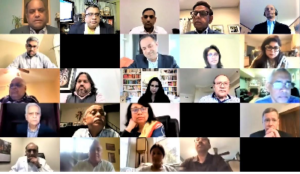 Representing the most impacted Hotel/Hospitality, Shelly Nichani, President, Infinity Hospitality Group, Stamford, CT, said, while the industry has been severely affected by the pandemic, “financial help from the Federal government has helped much, without which it would have been catastrophic.” While stating that the hospitality industry in CT has been doing overall very well, but the pandemic has halted the path to progress. He was optimistic that with the vaccines and state help, the industry will return to normal soon.
Representing the most impacted Hotel/Hospitality, Shelly Nichani, President, Infinity Hospitality Group, Stamford, CT, said, while the industry has been severely affected by the pandemic, “financial help from the Federal government has helped much, without which it would have been catastrophic.” While stating that the hospitality industry in CT has been doing overall very well, but the pandemic has halted the path to progress. He was optimistic that with the vaccines and state help, the industry will return to normal soon.